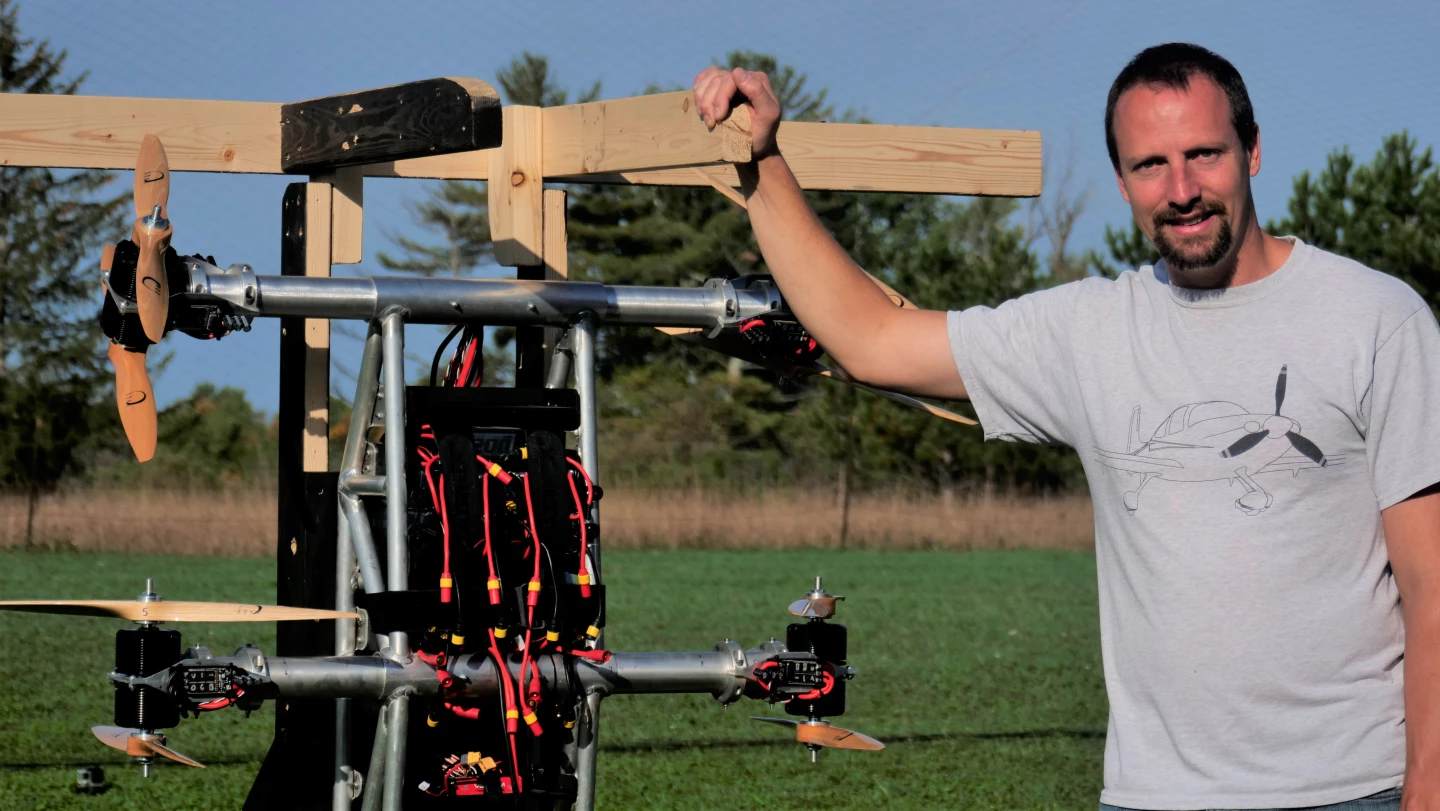Poplar, Wisconsin is a small village, population 603 as of 2010, near the Southwest tip of Lake Superior, about an hour and a half's drive from Minnesota. A humble place from which to start an electric aviation company, perhaps – although it does have the distinction of being the birthplace of the late Major "Dick" Bong, WW2 fighter pilot and America's "leading air ace of all time" with 40 aircraft kills in combat in New Guinea.
It's also the home of one Daniel Gant, a mechanical engineer, former manufacturing engineer at Cirrus Aircraft, and model aircraft enthusiast, who's spent the last year and a half working on an electric jetpack concept under the company name Ascend Dynamics, LLC.
Now, he's presented his first prototype, the Skypak V1. Designed to be worn as a backpack, this jigger puts shoulder straps on a welded aluminum frame, from which extend three arms on each side. At the end of these arms sit pairs of wooden propellers, coaxially mounted at jaunty angles. Twelve 7-kW motors give it a total peak power output of 84 kW (112 hp), and it weighs 80 lb (36 kg).
Well, the jetpack part does. At the moment, it's being flown unmanned, with the help of a dummy called Mitchell Gant, who has unreasonably sexy eyes, and a wooden support frame that takes the total weight up around 170 lb (77 kg), since Mitchell's not much good at balancing.

Gant – Daniel Gant, that is – says that with the current 50-V, 36.4-Ah, 1.82-kWh lithium-polymer battery pack on board, this contraption flies for about two minutes. This is of course just a proof of concept prototype, and we're glad to hear there are no plans to fly this one with a human head in such close proximity to those wooden props.
Gant's intention is to raise some cash through PayPal and Patreon donations in order to get a second-gen prototype funded for manned flight testing. Said prototype, named the Skypak V2, would use larger props inside prop shields to give the pilot a sense of protection. Weight would be closer to 100 lb (45 kg), so a rather hefty unit, and it'll carry a pilot of up to 200 lb (90 kg) for short stints of around two minutes.
Should manned tests proceed well – which would be no easy feat – Gant says he'll then move on to create a Skypak 1 for sale. The aluminum frame will be replaced by carbon fiber, the motors will gain some power, the payload will rise to around 300 lb (136 kg), and the endurance issue will be addressed by incorporating an onboard generator to feed the battery, letting it fly for more than 30 minutes, according to the Ascend Dynamics website.

Ascend says such a device would be useful in search and rescue, law enforcement, firefighting, and military applications, as well as helping out with more quotidian tasks like bridge inspections, and maintenance of above-ground comms towers, power lines and wind turbines. It would allow pilots to fly on manual control, or could offer a number of autonomous modes and sense-and-avoid gear to keep things constrained and safe.
Of course, right now, it's just a vertically-stacked 12-rotor drone with a good-lookin' dummy and a dream. But Major "Dick" Bong probably started with a dream too, and he became the Ace of Aces.
Check out a brief video below, complete with rockin' soundtrack.
Source: Ascend Dynamics








